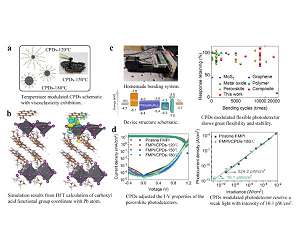An increase in the efficiency of solar panels may be on the horizon, as research from The Australian National University (ANU) reduces their current limitations.
ANU researchers have found a way to improve the performance of silicon photovoltaic (PV) or solar cells. This is done through the addition of ‘passivating contacts’ between the metal and silicon parts of the solar cell, making it more productive.
“These findings will help push the performance of silicon solar cells closer to their theoretical limit,” Mohamed Ismael, lead ANU researcher and PhD candidate said.
“Each day, the sun produces significantly more energy than needed to power the whole planet. The only limitation is our ability to economically convert it to electricity,” he said.
Solar cells are devices that convert light energy in the form of photons into electrical energy. As it stands, solar cells aren’t operating at their maximum capacity due to substantial electrical losses associated with the direct contact of metals with silicon.
“Transition metal oxides such as titanium oxide have many qualities that make them ideal as passivating contact layers,” Dr Lachlan Black said.
“This isn’t a new idea, but the way in which we combined these layers has produced better results and higher operating voltages than anything previously reported.”
The research team is hoping to develop the technology to a point where it can be applied to industrial solar cells on a large scale.
The PV market is a multi-billion-dollar industry, with silicon solar cells contributing to 95 per cent of all commercial solar cells. They are predicted to remain dominant for the foreseeable future given their advantageous properties compared to competitors.
“If successful, we could see our technology in almost all new solar panels installed on your roof or utility-scale solar plants,” Dr Black said.
Some practical issues still need to be addressed before the technology can be implemented, but the PV community is already working to solve these challenges.
“Improving the efficiency of solar cells guarantees more clean energy at a reduced cost. This not only helps to address climate change, but opens up new economic opportunities for this low-cost clean energy,” Ismael said.
Research Report:Outstanding Surface Passivation for Highly Efficient Silicon Solar Cells Enabled by Innovative AlyTiOx/TiOx Electron-Selective Contact Stack
Related Links
Australian National University
All About Solar Energy at SolarDaily.com
|
We need your help. The SpaceDaily news network continues to grow but revenues have never been harder to maintain. With the rise of Ad Blockers, and Facebook – our traditional revenue sources via quality network advertising continues to decline. And unlike so many other news sites, we don’t have a paywall – with those annoying usernames and passwords. Our news coverage takes time and effort to publish 365 days a year. If you find our news sites informative and useful then please consider becoming a regular supporter or for now make a one off contribution. |
||
|
SpaceDaily Contributor $5 Billed Once credit card or paypal |
SpaceDaily Monthly Supporter $5 Billed Monthly paypal only |
|

![]()
Carbonized polymer dots enhanced stability and flexibility of quasi-2D perovskite photodetector
Changchun, China (SPX) Oct 27, 2022
High-performance photodetectors with great detection capability have been widely deployed in our daily life, such as driverless technology, intraoperative navigated surgery, face recognition, anti-counterfeiting, and so on. However, we still face challenges as new demands are required for additional functions like excellent flexibility with no sensitivity/stability loss. Therefore, novel photosensitive materials or multi-functional composites are needed to meet the fast technology development.
In … read more
